PRESERVING A MILITARY LEGACY FOR FUTURE GENERATIONS
The following Reflections represents SK1 David Pitts’s legacy of his military service from 1972 to 2000. If you are a Veteran, consider preserving a record of your own military service, including your memories and photographs, on Togetherweserved.com (TWS), the leading archive of living military history. The following Service Reflections is an easy-to-complete self-interview, located on your TWS Military Service Page, which enables you to remember key people and events from your military service and the impact they made on your life. Start recording your own Military Memories HERE.
Please describe who or what influenced your decision to join the Navy.

Both my father and my brother served in the Army. They certainly influenced my decision to join the military. Also, my best friend in high school, Vince Chostner, convinced me to join the Navy together under the “Buddy” Program. This program guaranteed that we would attend Boot Camp, Storekeeper ‘A’ School, and our first duty station together. But after only three weeks in a nine-week boot camp together, I came down with double pneumonia, sinusitis, and hemorrhoids. I ended up at Balboa Naval Hospital for six weeks. Needless to say, he went on and graduated without me. Once I got out of the hospital, I had to start over in another company that was reduced to seven weeks.
As it turned out, this was a blessing. In my first Company 183, I had not taken on any responsibilities. I was young, inexperienced, and very scared. While I laid in the hospital those six weeks, I had time to reassess my situation. The morning before I was admitted to the hospital, we had a company personnel inspection. Of the three points that the company was gigged for, I was responsible for two. My cleft chin was not clean-shaven, and my duty belt slipped from the gig line when I grounded my rifle. When we returned to the barracks later that day, I also learned that I had left hash marks in one of the toilets. As a result, I was directed to run circles around the drill deck with my rifle over my head. I had a 103-degree temperature at the time.
When I returned to complete basic training in Company 294, I volunteered for a leadership role. I was appointed Company Yeoman, with a Cadet PO2 rank. In my responsibilities, I was the first to rise and the last to hit my bunk each evening. I gave immeasurable assistance to the Company Commander. As a result, I was rewarded the title of Company Honorman and received a meritorious promotion to E2.
Whether you were in the service for several years or as a career, please describe the direction or path you took. What was your reason for leaving?

My original enlistment in the Navy called for four years of active duty and an additional two years of inactive reserve duty. I never intended to stay beyond that. Do not get me wrong, I enjoyed my time on the two sister ships I was assigned to: the USS Mars (AFS-1) and the USS Niagara Falls (AFS-3). I had great leadership and shipmates on both. But as planned, I left active duty in June of 1976.
When I returned to my hometown of Sacramento, CA, I wanted to use my Vietnam Era GI education benefits while working around my school schedule. However, I decided to turn my required two years of inactive reserve duty into ready reserve duty, joining two reserve units at the Sacramento Naval & Marine Corps Reserve Center.
My first unit was with Cargo Handling Battalion 3, Detachment F. I stayed there for six years, including two weeks of training in Naples, Italy and a one-two week ACDUTRA aboard the USS Niagara Falls, assisting in preparing it for a WestPac deployment. In 1982, I transferred to a new unit with Naval Supply Center Oakland, Detachment B-620.
After two years, I began to miss the active camaraderie of my initial enlistment. The Reserve Center recruiter informed me about the TAR (Training and Administration of Reserves) community. The TAR community is an Active Reserve program for those assigned to Reserve Centers, Reserve Ships, and Deployable Reserve Units. For the next 16 years (1984-2000), I served various platforms with great satisfaction. I retired in June 2000 in Corpus Christi, Texas.
If you participated in any military operations, including combat, humanitarian and peacekeeping operations, please describe those which made a lasting impact on you and, if life-changing, in what way?

During the 28 years I spent in active duty, ready reserve, and active reserves, I was never involved in direct combat operations. My first ship participated in supporting Operation Endsweep in 1973, supplying vessels in the Gulf of Tonkin and Haiphong Harbor. This mission involved mine-clearing efforts in these areas near Vietnam, although we did not receive the Vietnam Service Ribbon.
I recall my first two ships were also involved in Operation Handclasp, providing humanitarian aid to the Philippines and Singapore. However, it was difficult to fully grasp the impact when we merely dropped off supplies at local ports. My first ship was among the initial deployments to the Arabian Gulf in 1973-74, followed by a second deployment in 1975. Little did we know that these Middle Eastern missions would continue until 2018.
In 1991, while stationed at the Naval Reserve Center in Columbus, GA, we activated our NR Seabee Unit for Desert Shield/Desert Storm deployment to Saudi Arabia. I knew many of these Seabees personally and worried about their safety. Fortunately, they all returned safely, or so I believed. Unfortunately, many of them later experienced Gulf War illnesses and struggled for years with the VA for recognition and support, with some passing away without much assistance.
Did you encounter any situation during your military service when you believed there was a possibility you might not survive? If so, please describe what happened and what was the outcome.

Two incidents occurred in the Philippines and South Korea when I was on liberty.
The first incident happened in Olongapo City outside a nightclub on Magsaysay Drive. The country was under Martial Law (1972-1981), and everyone warned us about the Philippine Constables (PC). As I stepped out from the stairway exit of the D*Pearl Club, I spotted a drunk PC indiscriminately firing his handgun while walking down the then dirt road. He did look my way, but I threw my body back into the stairway and back up into the second-story club entrance. I do not know what happened to him, but I waited patiently for the danger to pass.
The second incident occurred in a club, again, while in Pusan, South Korea. A Korean gentleman began speaking loudly and looking in my direction. I did not understand what he was saying, but I could see the apparent concern of other Korean patrons and employees. As he approached me, he pulled out a rather large knife, and I found myself suddenly surrounded by those concerned Koreans. They whisked me out of danger without further incident.
LESSONS LEARNED: Be aware of your surroundings in perceived safe locations, and do not drink in excess!
Of all your duty stations or assignments, which one do you have fondest memories of and why? Which was your least favorite?

I was most proud of my assignment to Mobile Inshore Undersea Warfare Unit 108 at the Naval & Marine Corps Reserve Center in Corpus Christi, TX. These units provide inshore surveillance utilizing a portable electronic van with sonar and radar capabilities. They would deploy offshore sonar buoys for shallow water surveillance.
For the first year, I performed my Independent Storekeeper, Ashore Duties. We deployed with the Naval Reserve unit members to Pohang, South Korea, for Exercise Freedom Banner 95. I was assigned as the in-camp Supply Officer for MIUWs 108, 109, 14, and 201. I received a Letter of Commendation from the Commander, Naval Inshore Undersea Warfare Group One, and a Letter of Appreciation from the Commander, Naval Beach Group One.
But it was during my final two years that I was selected as the Petty Officer-in-Charge of the active-duty cadre of eight. This position is typically assigned to an E7 or above. During 1996, the unit deployed to Thailand for field exercises. In the final year, I was noted as a driving force in the preparations for the unit mission success while deployed to Bahrain. I was awarded Active Duty Sailor of the Year for 1997 and received a Naval & Marine Corps Commendation Medal at the end of my tour.
Probably my least favorite assignment was to Naval Reserve Center Columbus, GA. The second Commanding Officer was very difficult to work with. Though he commanded an excellent use of the spoken and written word, his leadership skills to the enlisted-only staff and many members of the Naval Reserve units assigned were less impressive. He talked to the enlisted personnel about personal matters (his divorce), about professional issues (his previous commands non-selecting him to CDR), and he spoke disparagingly about the incoming prospective Chief-of-Command. As LPO, I felt compelled to talk to the parent Reserve Readiness Command Master Chief in Jacksonville, FL, about his indiscretions.
Though I had received an outstanding on the Triannual Supply Inspection, I became the Sailor-of-the-Year and received my 3rd Navy & Marine Corps Achievement Medal. He promised me that my final evaluation would effectively and legally prevent my selection to Chief Petty Officer. I never did select for Chief, but it was, I believe, my lack of sea time and my age.
Two months after I left this Command, the CO was removed for cause on a violation of Fraud, Waste & Abuse complaint filed by members of the Seabee unit.
LESSON LEARNED: Speak up when you feel there is an abuse of leadership. Choose your words/actions carefully, though, and understand the ramifications of those actions!
From your entire military service, describe any memories you still reflect back on to this day.

I served for and served with so many great people. Throughout my life, I would think about these great shipmates. It was only recently that I rediscovered some of them through social media. Now, I can remember the old days and witness their lives now. What a blessing!
What professional achievements are you most proud of from your military career?

I am most satisfied with the 16 final years that I served as an Active Reserve in the Training and Administration of Reserves (TAR) community. Today this community is referred to as Full-Time Support (FTS). At each of those duty stations, I worked vigorously to achieve the highest standards of performance.
As a result, I earned Sailor of the Year in 1986, and my first Navy Achievement Medal in 1987 at N&MCRC San Diego, CA. My next duty station was Naval Reserve Center, Bremerton, WA. I earned Sailor of the Year and was awarded my second Navy Achievement Medal in 1990. At Naval Reserve Center Columbus, GA, I was the Sailor of the Year and earned my third Navy Achievement Medal in 1992.
In 1997, I was Sailor of the Year at Mobile Inshore Undersea Warfare Unit 108 in Corpus Christi, TX, and I was awarded the Naval & Marine Corps Commendation Medal at this unit in 1998. Finally, in 2000, I was awarded my fourth Navy and Marine Corps Achievement Medal from my last command at Fleet Industrial Supply Center Jacksonville, Detachment Ingleside, TX.
There is a personal lesson I learned in the accumulation of all these certificates and hardware during those years. They were all earned for my hard work, but not necessarily, smart work. I put in long hours at each duty station that took its toll on my mental and physical health. Everyone around me praised me, but they warned me to slow down, take it easy, do not work so hard. Even in my civilian work, some co-workers admired me, and those that despised me because I tended to make them look bad. That was not my intention.
As it turned out, in 1991, I would suffer a depressive incident that hospitalized me. And again, in 1998, I would be hospitalized for depression and diagnosed with ADHD. Had I suffered from these conditions in the 21st-century Navy, I would have probably been medically discharged. I was fortunate not to have any disciplinary problems during these incidents that would violate any of the UCMJ articles.
LESSONS LEARNED: I would say to prospective young sailors to work smart, play smart, and live smart!
Of all the medals, awards, formal presentations and qualification badges you received, or other memorabilia, which one is the most meaningful to you and why?

Assignment as Petty Officer in Charge of Active Cadre Duty and Navy & Marine Corps Commendation Medal
As mentioned in an earlier question, my most meaningful experience occurred while attached to the Mobile Inshore Undersea Warfare Unit in Corpus Christi, TX. While all of us sailors serve primary duties, we also are assigned numerous collateral duties. In my assignment to the two Naval Reserve drilling units, I was greatly involved in the indoctrination of new members, the keeping of training records, and the recording of member drill payment records.
When I returned to active duty, I not only taught several military subjects, but I also led and organized the New Member Indoctrination Program. I was the Drug & Alcohol Program Advisor (DAPA) at many commands. I was Leading Petty Officer at all of my following commands, and I had to supervise and advise the subordinates under me whether it was related to paying a debt or NJP issues.
At each of these commands, I was the lead for Supply and Contracting matters. But it was at MIUWU 108 that I was given the opportunity to direct and supervise the running of a deployable unit platform in admin needs (YN), communications needs (RM), maintenance & transportation needs (EM), and the various needs of the technical aspect of the unit (ET, STG). It was most rewarding, and not a typical opportunity for a First Class Petty Officer, in particular, a Storekeeper!
Which individual(s) from your time in the military stand out as having the most positive impact on you and why?
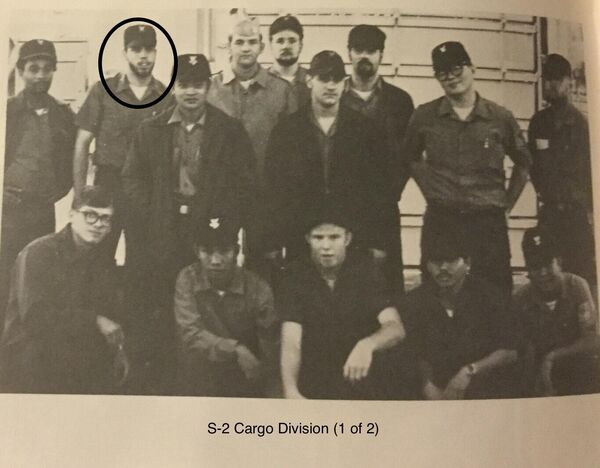
All of my divisional and departmental shipmates had a positive impact on me. In many cases, we worked, slept, and steamed together. Some mentors and leaders influenced me over the years. Lt. Joe Palunuk on the Mars and Lt. Reese on the Niagara Falls guided me in the early years. SKC Dick Cowden of IUW Group One helped steer me toward the interest in the MIUW community. SKCS Robert Betters was an important mentor in my early years as a TAR and instrumental in my promotion to SK1. Captain Anthony Megna, also at the San Diego Reserve Center, was supportive in my quest to attend Officer Candidate School (OCS). Though it was not a successful effort, it left a lasting impression and a guiding influence on me.
Commander James Morrell, CO in Bremerton, WA, was an influencing person in my life. He was a Mustang, and I can say I have never met a Warrant Officer or a Mustang that I did not like. It was the prior-enlisted/Officer mix that most often made the connection. There is YN1 Helen Kramer, who I was fortunate enough to be stationed together at two of my commands. Her professional and personal skills were outstanding. RM1 Jimmy Yeakel was a soothing comical relief for me. I admired his single parent skills with sole custody of 3 young kids.
List the names of old friends you served with, at which locations, and recount what you remember most about them. Indicate those you are already in touch with and those you would like to make contact with.

I have only been on Facebook for a few short years since 2015. But along with other social networks, I have connected with many of them.
On Facebook:
SK3 Ellis Cartright, SKSN Tim Ringgold, SK3 Ed Rooks, SKSN Raymond Sullivan, SKSN Manuel Vega & SK2 Joel Wanha – USS Mars (AFS-1).
SK3 Chuck Kolb, SK2 Ed Rooks (again), SK2 Mike Sudduth & SK3 Doug Taylor – USS Niagara Falls (AFS-3).
YN1 Helen Kramer & RM1 Jimmy Yeakel – MIUW Unit 108.
On TWS & ships’ web pages:
CWO2 Jim Adrian – S-2 Cargo Division Officer, USS Mars.
SK1 Ellis Elton, SK1 Florencio Ignacio, PN1 E. Mack Richards, BMC Tom Wallin also from the Mars.
SK1 Dexter Stepp (LPO), MA1 Lee Machado, SK3 Percy Springsteen, BM3 Louis Michaud, BTFN Kevin Darcy, BT3 Billy Don James, EM1 Jack Winhall, AK1 Rodolfo Virgilio & GM2 Robert Vigil from the Niagara Falls.
LCDR Robert Paulk, XO, MIUW Unit 108.
I long to reconnect with Vince Chostner, the high school buddy that convinced me to join the Navy. We first lost contact while in Boot Camp. I would reconnect with him in Virginia Beach in 1978. He had married. But since then, we have lost touch again.
Can you recount a particular incident from your service which may or may not have been funny at the time but still makes you laugh?
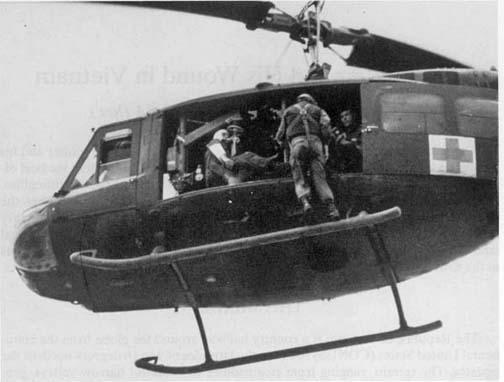
WHO WANTS A FREE RIDE IN A HELICOPTER? This is a no-shit sea story! Really!
In 1978, while attached to Naval Reserve Cargo Handling Battalion, Detachment F, we participated in a Mini-War Exercise on the outskirts of Mare Island. It involved all branches of the armed forces, including the Army, Navy, Marine Corps, and the Air Force. The only access to the area of operation was by helicopter or small boat. The Army and Navy were part of the defending team, while the Marines and Air Force were part of the attacking team.
During the day, the Army and Navy dug-in to defend the camp by digging foxholes and setting up other defensive obstacles. The actual exercise would begin at midnight and continue until sunrise.
As we prepared for the night’s exercise, the Army medics called for volunteers to serve as casualties so they could practice their medical skills. Each volunteer would be outfitted with a realistic injury moulage (i.e., gunshot wounds, broken bones, leg/arm amputations, etc.). I was given a compound fractured leg moulage. I slipped it under my green fatigue pants around my thigh. We were told that when the Marines attacked, we would advance on them and then sprawl to the ground in agony. We were told to be realistic and scream in pain as the medics treated the injury. The reward was a free ride in a UH-1 Huey MedEvac helicopter.
So as the Marines attacked, I advanced with a weapon in hand and did a precarious flip over some vegetation and hit the deck, screaming in agony with my leg in a contorted angle! As the helicopter flew above us, swirling dust and other debris, the medics reached my position. They asked me where I was hurt. As I writhed in pain, I told them it was my leg and that I was hit by something. As they worked on me, I noticed that they cut a small slit in my pant leg, and they told me I had an apparent fractured leg. Eventually, they cut the entire pant leg off at the crotch. They then leaned into me and said they were going to give me something for pain as I continued to scream in agony.
Suddenly, I felt a needle prick through my long-sleeved fatigue shirt. I remember thinking to myself that this was getting more realistic than I imagined. As I laid there in confusion, I saw my unit buddies standing around me, shaking their heads and murmuring my name over and over. Finally, the medic that initially outfitted us with our fake wounds approached me and asked if I was really hurt. Of course not, I said! You told me to put on an act! Well, he said, they just gave you 12 milligrams of morphine. Needless to say, I was not happy.
As the predicament became apparent to the entire medical team, one of them suggested I be put under a nearby tree to ride it out. But when more senior Army officials arrived at the scene, they more seriously decided that I needed to be evacuated to the nearest medical facility. I would get my free ride on the helicopter, after all!
So, as we were flying to Travis AFB, I could no longer lift my head, and I felt very warm. I began to laugh at the situation hysterically. As the helicopter landed, I could hear the sound of sirens, and I could see many people running around in all directions. Once they reached me, they asked me what happened. I told them I was involved in a medical exercise, and the medics mistakenly gave me morphine.
Immediately, they all busted out laughing. I told them it really was not that funny. They relayed to me that as we were flying in, the helicopter pilot saw and heard me laughing. He then radioed to Travis Emergency, telling them that the patient was apparently in hysterics. He suggested that they administer more morphine upon arrival.
Well, that did not happen! Instead, the emergency medical team gave me a shot to reverse the effects of the morphine. I was up and around in no time! I was stuck with the reality that I was miles away from my unit with no sense of how I was going to return.
Luckily, I was able to catch another helicopter back to the exercise area. When I arrived, I went to the Medical tent to let them know I was okay. They told me they thought I was really injured. Fortunately, I had an extra pair of green fatigue pants to replace the pants that had been cut at the crotch.
I tried to get my story published in Readers Digest in the Humor in Uniform section. But it did not come to pass!
What profession did you follow after your military service, and what are you doing now? If you are currently serving, what is your present occupational specialty?
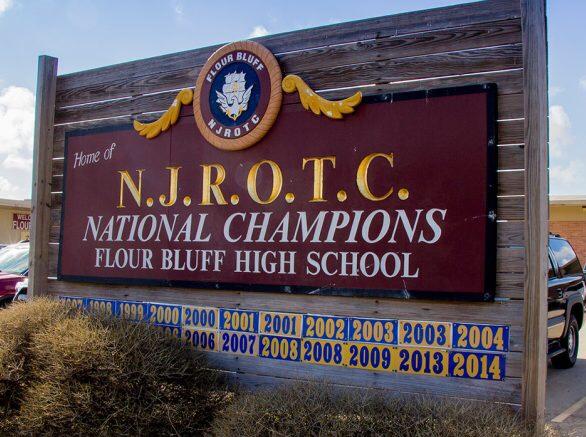
During the final four years of my Naval Career, I became involved with the Flour Bluff High School NJROTC Unit in Corpus Christi, TX. The unit was just three years old, having been established under CDR Armando Solis, a retired Supply Corps Officer. My wife and I encouraged our daughter, Megan, to look into joining the unit. We believed it would be a great experience for her, and she did get an opportunity to meet the unit’s Executive Officer, Cadet Lieutenant Commander Darlene Franklin. I could see Darlene was a petite, feisty, go-getter. Megan was impressed! So too, were my wife and I.
These units, located throughout the United States, employ retired officers and enlisted personnel (E6 & above) as Naval Science Instructors to teach Naval Science, which includes Navy terminology & organization, history, small boat handling, and chain of command, among many other Navy topics. Most units have Armed & Unarmed Drill Teams, Color Guard, Academic, Physical Fitness, Air Rifle/Pistol, & Cyber/IT teams. They compete with other units locally, across the state, as well as in national & even all-services drill meets.
My wife, Terri, and I became deeply involved with the unit’s Booster Club. I assisted in coaching the Junior Varsity Unarmed Team. We both traveled with the teams, assisted in their preparation for drill meets, and I even drove a Navy bus, taking them to various statewide events. I served one year as the Booster Club President.
I earned a Military Outstanding Volunteer Service Medal, and with CDR Solis’s recommendation and support, I applied for a Naval Science Instructor Certification. I certified in 2000 and was hired by the Mary Carroll High School NJROTC Unit led by CDR Paul Holder. I had a job the day after my official Navy retirement!
Over the next three years, in addition to teaching Naval Science subjects, I was the coach of the Academic Teams, the Color Guard Teams, and the Air Rifle/Pistol Teams. In 2003, CDR Solis called me to join them when the Master Chief Corpsman retired. At this nationally recognized unit, I would again coach the Color Guard & Air Rifle/Pistol Teams. In 2011, after 11 years as a Naval Science Instructor, I had to medically retire due to heart disease.
The signboard pictured represents the National Championships that the unit has won over the years. There were 11 Navy National Championships (10 in a row) and 16 All-Service National Championships. What it does not show are the 23 Navy State/Area Championships (22 in a row) and 4 National Academic Championships. CDR Solis retired in 2017 after serving 24 years as the unit Senior Naval Science Instructor.
By the way, my daughter, Megan, would stay in the unit all four years of high school. As a member of the Unarmed Drill Team, the Color Guard Team, and the Physical Fitness Team, she would be the first 4-time Navy JROTC Area/State Champion and first 4-time Navy JROTC National Champion in Pensacola, FL. In her senior year, she would command the Unarmed Drill Team at the All-Services Championship in Daytona Beach, FL, to earn the unit’s first championship there.
No, she did not join the military, but she did graduate from Texas A&M College Station, TX. Go AGGIES!
What military associations are you a member of, if any? What specific benefits do you derive from your memberships?
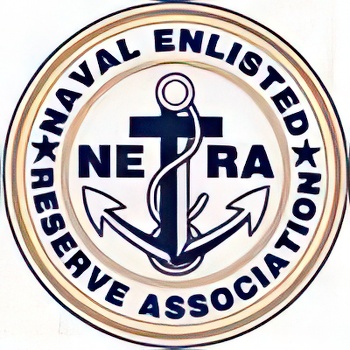
I am a MAL Life Member of the Navy Enlisted Reserve Association (NERA), and a continuing member of the Fleet Reserve Association (FRA), Branch 94 in Corpus Christi, TX. I am not directly involved in the day-to-day activities of these associations, but I have made donations for their continuous fight for the benefits of Sea Service active duty and veterans members.
In September 2018, I joined the American Legion Post 39 in La Grange, Kentucky. I wanted a local organization where I could volunteer my services to the veterans’ community. By my second year with the American Legion, I was voted to become the post’s Sergeant-at-Arms.
In what ways has serving in the military influenced the way you have approached your life and your career? What do you miss most about your time in the service?

I have to say the earliest training in my career was the most influential. It was that planning/ organizing, attention to details, camaraderie, time management & instilled patriotism skills during basic training (boot camp), that best influenced the rest of my life. I feel I have been a very good citizen as an individual, to my fellow citizens, and the country.
Based on your own experiences, what advice would you give to those who have recently joined the Navy?

Joining the military, whatever service, is a very big commitment for anyone. With civilian work, educational endeavors, or even relationships, you can quit, stop attending or change your mind with little or no consequences. But once you commit to military service, you are obligated to reach the finish line. When I joined, it was for a six-year obligation- 4 years active and two years inactive.
Today, I believe the contract calls for eight years of service with a combination of active duty, ready reserve duty, and inactive reserve duty if you wanted to make the service a career you had to give at least 20 years of active duty.
Today, service members have different opportunities to serve in varying increments or as a full career. At each of these increments, there is a level of return investment on your service.
But, of course, military service is not for everyone. If you do not like someone else telling what you can and cannot do, if you do not want someone else to tell you where you will be living, or if you do not want to serve in a combat role- military service is not for you.
I personally lived my life in increments. For my education, I got a 2-year associate’s degree first, making sure I would be able to complete upper-level education. I would later complete two more years to obtain my bachelor’s degree. So too, I took my military services in batches. I got out after four years of active duty to begin my higher education, and to test the civilian market employment. But during those eight years, I kept a connection to the Navy via Ready Reserve (Weekend Warrior) service. When I returned to Active Reserve Duty, I knew that I would make the Navy a career.
I tend to agree along the lines of a 2-year compulsory military or humanitarian service obligation for 18-year-old males and females alike. I think that such an idea would build stronger citizens, and would benefit the nation as a whole.
In what ways has togetherweserved.com helped you remember your military service and the friends you served with.
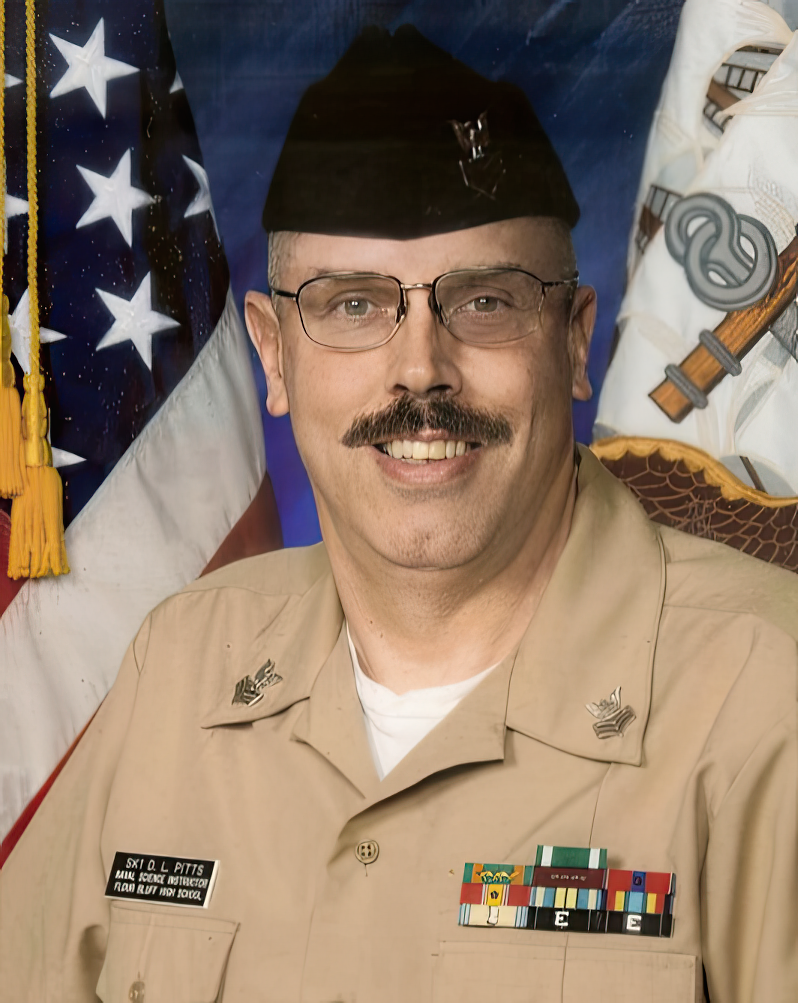
TogetherWeServed.com has provided a platform to document my military service by telling my story and featuring supporting photos. Of course, this is specifically intended for my family to document. I think it successfully illustrates the failures and achievements of my life.
It has also helped me to connect with fellow shipmates, whom I knew casually and whom I knew more specifically. As I complete my story, I can observe other shipmate stories that have just begun, and perhaps, find new stories that have not yet been written. I suspect that within ten years, the value of TogetherWeServed to me will be immeasurable.
KC 9.27.24
PRESERVE YOUR OWN SERVICE MEMORIES!
Boot Camp, Units, Combat Operations
Join Togetherweserved.com to Create a Legacy of Your Service
U.S. Marine Corps, U.S. Navy, U.S. Air Force, U.S. Army, U.S. Coast Guard
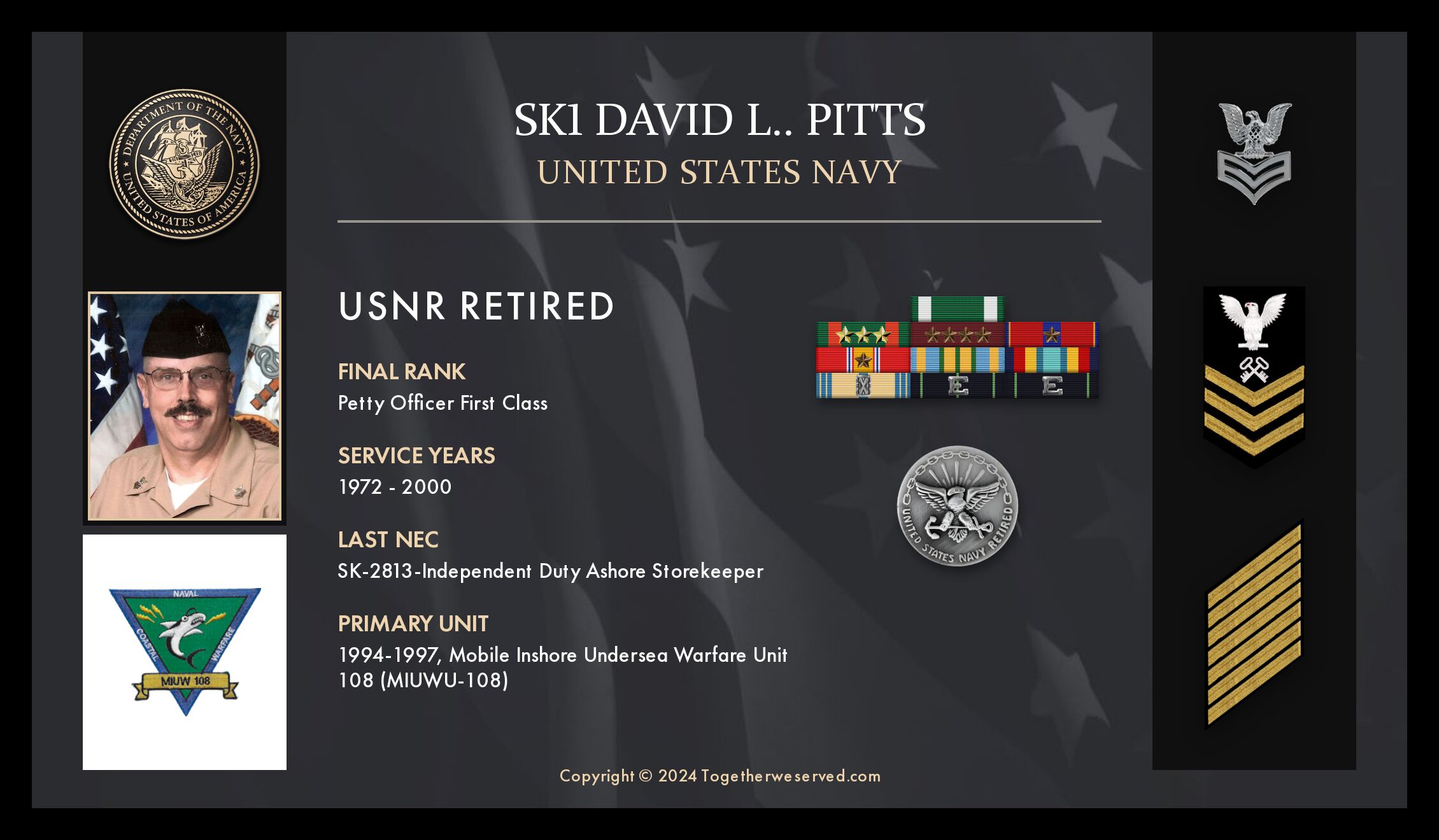
0 Comments